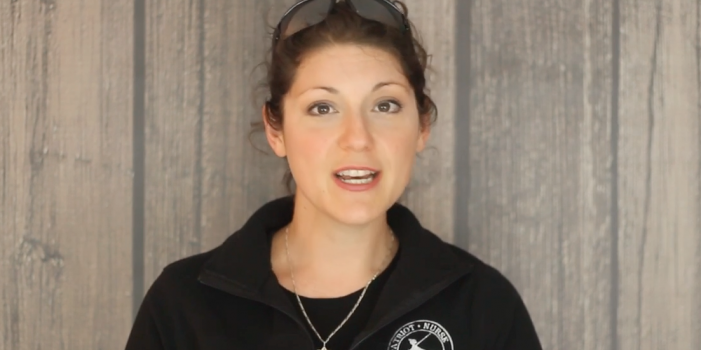“A general dissolution of principles and manners will more surely overthrow the liberties of America than the whole force of the common enemy. While the people are virtuous they cannot be subdued; but when once they lose their virtue then will be ready to surrender their liberties to the first external or internal invader.” – Samuel Adams
- Ad USA Berkey Water Filters - Start Drinking Purified Water Today!#1 Trusted Gravity Water Purification System! Start Drinking Purified Water now with a Berkey water filtration system. Find systems, replacement filters, parts and more here.
- Ad STRATEGIC RELOCATION REALTYFOR SALE: Self-sustaining Rural Property situated meticulously in serene locales distant from densely populated sanctuary cities. Remember…HISTORY Favors the PREPARED!
Preparedness Notes for Wednesday – May 02, 2018
On May 2, 1945, the Soviet Union announced the fall of Berlin and the Allies announced the surrender of Nazi troops in Italy and parts of Austria.
o o o
SurvivalBlog Writing Contest
Today features another entry for Round 76 of the SurvivalBlog non-fiction writing contest. The nearly $11,000 worth of prizes for this round include:
First Prize:
- A $3000 gift certificate towards a Sol-Ark Solar Generator from Veteran owned Portable Solar LLC. The only EMP Hardened Solar Generator System available to the public.
- A Gunsite Academy Three Day Course Certificate. This can be used for any one, two, or three day course (a $1,095 value),
- A course certificate from onPoint Tactical for the prize winner’s choice of three-day civilian courses, excluding those restricted for military or government teams. Three day onPoint courses normally cost $795,
- DRD Tactical is providing a 5.56 NATO QD Billet upper. These have hammer forged, chrome-lined barrels and a hard case, to go with your own AR lower. It will allow any standard AR-type rifle to have a quick change barrel. This can be assembled in less than one minute without the use of any tools. It also provides a compact carry capability in a hard case or in 3-day pack (an $1,100 value),
- Two cases of Mountain House freeze-dried assorted entrees in #10 cans, courtesy of Ready Made Resources (a $350 value),
- A $250 gift certificate good for any product from Sunflower Ammo,
- Two cases of Meals, Ready to Eat (MREs), courtesy of CampingSurvival.com (a $180 value), and
- American Gunsmithing Institute (AGI) is providing a $300 certificate good towards any of their DVD training courses.
Second Prize:
- A Model 175 Series Solar Generator provided by Quantum Harvest LLC (a $439 value),
- A Glock form factor SIRT laser training pistol and a SIRT AR-15/M4 Laser Training Bolt, courtesy of Next Level Training, which have a combined retail value of $589,
- A gift certificate for any two or three-day class from Max Velocity Tactical (a $600 value),
- A transferable certificate for a two-day Ultimate Bug Out Course from Florida Firearms Training (a $400 value),
- A Three-Day Deluxe Emergency Kit from Emergency Essentials (a $190 value),
- A $200 gift certificate good towards any books published by PrepperPress.com,
- RepackBox is providing a $300 gift certificate to their site.
Third Prize:
- A Royal Berkey water filter, courtesy of Directive 21 (a $275 value),
- A large handmade clothes drying rack, a washboard, and a Homesteading for Beginners DVD, all courtesy of The Homestead Store, with a combined value of $206,
- Expanded sets of both washable feminine pads and liners, donated by Naturally Cozy (a $185 retail value),
- Two Super Survival Pack seed collections, a $150 value, courtesy of Seed for Security, LLC,
- Mayflower Trading is donating a $200 gift certificate for homesteading appliances, and
- Two 1,000-foot spools of full mil-spec U.S.-made 750 paracord (in-stock colors only) from www.TOUGHGRID.com (a $240 value).
Round 76 ends on May 31st, so get busy writing and e-mail us your entry. Remember that there is a 1,500-word minimum, and that articles on practical “how to” skills for survival have an advantage in the judging.
- Ad Civil Defense ManualClick Here --> The Civil Defense Manual... The A to Z of survival. Looks what's in it... https://civildefensemanual.com/whats-in-the-civil-defense-manual/
- Ad Survival RealtyFind your secure and sustainable home. The leading marketplace for rural, remote, and off-grid properties worldwide. Affordable ads. No commissions are charged!
Never Think You Are Safe, by A.E.
Back in 1986, I was living in a ground floor condo in a large complex where I thought I was safe. My apartment opened onto a grassy common area, which several buildings faced at differing angles, as it was not geometrical. While I was playing on my patio with my one year child, I heard a women yell “help me, somebody help me”. Unfortunately, her voice was faint and the buildings caused a slight echo, so I could not pinpoint the exact building or condo. As I searched the area, the voice abruptly stopped. Was she gagged? Beaten? It was not a prank. I called the police, who just did a cursory look, asked only a few questions, and then left. There was not much I could tell them. I wonder if a women died that day.
This experience taught me that the police are limited in their ability to prevent crimes. Maybe they don’t really care after being hardened by years of police work. Or maybe they cannot do more, frustrated by protocols, reports, superiors, or adverse news.
As I age, I fully understand the need for situational awareness and preparation. Below is a mental exercise or awareness process that we should consider doing every day.
Ask yourself some questions.
- Ad USA Berkey Water Filters - Start Drinking Purified Water Today!#1 Trusted Gravity Water Purification System! Start Drinking Purified Water now with a Berkey water filtration system. Find systems, replacement filters, parts and more here.
- Ad California Legal Rifles & Pistols!WBT makes all popular rifles compliant for your restrictive state. Choose from a wide range of top brands made compliant for your state.
Economics & Investing For Preppers
Here are the latest items and commentary on current economics news, market trends, stocks, investing opportunities, and the precious metals markets. We also cover hedges, derivatives, and obscura. And it bears mention that most of these items are from the “tangibles heavy” contrarian perspective of JWR. (SurvivalBlog’s Founder and Senior Editor.) Today’s focus is on Silver Bargain Hunting.
Precious Metals (Silver Bargain Hunting):
If you are persistent, you can find some silver at bargain prices. In my experience, the best places to go silver bargain hunting are:
1.) Garage and estate sales. Once in a while you will be more knowledgeable than the seller about the current value of silver or of particular coins.
2.) Gun shows. Look for a table where most of the merchandise is guns, but where there are a few silver coins in their display case, along with the seller’s pistols. Often, if you have a gun to trade, you can swap it at a favorable rate, for silver, with such a dealer. Or the dealer might be looking to cash out his silver. Employ the classic: “And what’s my price if I buy it all?” gambit.
3.) Bank teller drawers. Ask at your local bank teller if they have any rolls of half dollars. You can find a surprising number of 40% silver half dollars available at face value. (50 cents per coin.) Coin Roll Hunting is time consuming, but usually worth the effort. I once had a kind teller sell me a U.S. Silver Eagle for $1. (Even though they are .999 silver they are still legal tender and marked “One Dollar.” So once in a while someone will deposit one without realizing their full value.) I don’t expect that to ever happen again!
4.) Pawn shops. Bring cash, and go chat up your local pawn broker. Start looking at his or her selection of 1 ounce .999 silver trade dollars. Many times, I’ve been able to buy silver at or near spot. One good bargaining technique is to ask: “If I buy all of these rolls, including this roll of U.S. Mint Silver Eagles, can I have them all at the same price?”
5.) Coinstar machines. Check the reject bin each time you walk by a Coinstar machine. And be sure to get to know the store clerk who in charge of their Coinstar machine’s regular maintenance. Often times, they will have small bags of reject coins available for sale at face value. Many of these will be foreign coins or bent coins. But there will probably be some silver coins, to make it more than worthwhile!
- Ad LifeSaver 20K JerryCan Water PurifierThe best water jerrycan you can buy on the market! Mention Survivalblog for a Free Filter ($130 Value)
- Ad Trekker Water Station 1Gal Per MinuteCall us if you have Questions 800-627-3809
The Editors’ Quote of the Day:
“What this power is I cannot say; all I know is that it exists and it becomes available only when a man is in that state of mind in which he knows exactly what he wants and is fully determined not to quit until he finds it.” – Alexander Graham Bell
- Ad Click Here --> Civil Defense ManualNOW BACK IN STOCK How to protect, you, your family, friends and neighborhood in coming times of civil unrest… and much more!
- Ad Ready Made Resources, Trijicon Hunter Mk2$2000 off MSRP, Brand New in the case
Preparedness Notes for Tuesday – May 01, 2018
May 1st is the birthday of the late Joel Rosenberg, a Canadian-born novelist and gun rights advocate (born 1954, died June 2, 2011). He is not to be confused with Joel C. Rosenberg (born 1967), who is another great novelist and the author of The Last Jihad series.
o o o
SurvivalBlog Writing Contest
Today features another entry for Round 76 of the SurvivalBlog non-fiction writing contest. The nearly $11,000 worth of prizes for this round include:
First Prize:
- A $3000 gift certificate towards a Sol-Ark Solar Generator from Veteran owned Portable Solar LLC. The only EMP Hardened Solar Generator System available to the public.
- A Gunsite Academy Three Day Course Certificate. This can be used for any one, two, or three day course (a $1,095 value),
- A course certificate from onPoint Tactical for the prize winner’s choice of three-day civilian courses, excluding those restricted for military or government teams. Three day onPoint courses normally cost $795,
- DRD Tactical is providing a 5.56 NATO QD Billet upper. These have hammer forged, chrome-lined barrels and a hard case, to go with your own AR lower. It will allow any standard AR-type rifle to have a quick change barrel. This can be assembled in less than one minute without the use of any tools. It also provides a compact carry capability in a hard case or in 3-day pack (an $1,100 value),
- Two cases of Mountain House freeze-dried assorted entrees in #10 cans, courtesy of Ready Made Resources (a $350 value),
- A $250 gift certificate good for any product from Sunflower Ammo,
- Two cases of Meals, Ready to Eat (MREs), courtesy of CampingSurvival.com (a $180 value), and
- American Gunsmithing Institute (AGI) is providing a $300 certificate good towards any of their DVD training courses.
Second Prize:
- A Model 175 Series Solar Generator provided by Quantum Harvest LLC (a $439 value),
- A Glock form factor SIRT laser training pistol and a SIRT AR-15/M4 Laser Training Bolt, courtesy of Next Level Training, which have a combined retail value of $589,
- A gift certificate for any two or three-day class from Max Velocity Tactical (a $600 value),
- A transferable certificate for a two-day Ultimate Bug Out Course from Florida Firearms Training (a $400 value),
- A Three-Day Deluxe Emergency Kit from Emergency Essentials (a $190 value),
- A $200 gift certificate good towards any books published by PrepperPress.com,
- RepackBox is providing a $300 gift certificate to their site.
Third Prize:
- A Royal Berkey water filter, courtesy of Directive 21 (a $275 value),
- A large handmade clothes drying rack, a washboard, and a Homesteading for Beginners DVD, all courtesy of The Homestead Store, with a combined value of $206,
- Expanded sets of both washable feminine pads and liners, donated by Naturally Cozy (a $185 retail value),
- Two Super Survival Pack seed collections, a $150 value, courtesy of Seed for Security, LLC,
- Mayflower Trading is donating a $200 gift certificate for homesteading appliances, and
- Two 1,000-foot spools of full mil-spec U.S.-made 750 paracord (in-stock colors only) from www.TOUGHGRID.com (a $240 value).
Round 76 ends on May 31st, so get busy writing and e-mail us your entry. Remember that there is a 1,500-word minimum, and that articles on practical “how to” skills for survival have an advantage in the judging.
- Ad SIEGE belt: the original unmatched action belt. Proven in many unexpected situations on wearers' daily routines & travels. Engineered for extreme durability, performance, comfort & stunning looks. The only effective EDC you can take anywhere.SIEGE STOVES: prep for adventure/crisis with the ultimate ultra-compact survival stove. SIEGE BELTS: prized by those in the know. Blazing fast. Stunning appearance. USA-made.
- Add Your Link Here
Staying Hidden Online, by Z.M.
We’re being monitored, online. That’s nothing new though. We all know that. In a world that increasingly grows to rely upon technology, and where your individual data points can mean big money for some advertiser somewhere, it should come as no surprise that just about everything that we do online has been recorded and stored on some server somewhere.
I’ve grown quite alarmed over this the past few years, but I have never really known where to even start. I just thought “Incognito” mode on Chrome was enough to hide me from all that was happening. I was wrong. After doing quite a bit of research on the subject over the past few years, I’ve learned quite a bit that is not only beneficial but easy to use as well. Here are just a few of the many tips I’ve found that can help you to retain some level of anonymity while online. This is by no means a comprehensive list. There’s a ton of other things that you can do to protect your information online. However, this should give you a decent place to start.
Facebook has gained quite a bit of notoriety of late for the amount of data it collects from each user. Not only does Facebook know what you post, like, and send messages about while using Facebook, but it can often discover more about you based on other sites you visit.
Trackers
Facebook adds trackers that will request information from other sites, even after you’ve already logged out of Facebook. These trackers will find out your geographic location, monitor which sites you visit, and what you click on while on those sites.
SurvivalBlog’s News From The American Redoubt
Here is SurvivalBlog’s News From The American Redoubt. This weekly column features news stories and event announcements from around the American Redoubt region. We also mention companies of interest to preppers that are located in the region. The emphasis this week is on the Glacier Park snowpack, at the Continental Divide.
Region-Wide
The Bard of the Redoubt over at The Charles Carroll Society has started a new YouTube channel. You can subscribe to it here.) He has produced an interesting series of videos covering the situation in South Africa. And his video titled How to Defeat Active Jamming with Existing Equipment may be useful for both those facing farm attacks in South Africa and for preppers on this side of the pond.
Idaho
Owners of Boise homes destroyed by slide settle lawsuits
o o o
Idaho governor hopefuls go on the attack as May 15 primary nears
o o o
Redoubt News Idaho Primary Election Recommendations
Continue reading“SurvivalBlog’s News From The American Redoubt”
The Survivalist’s Odds ‘n Sods:
SurvivalBlog presents another edition of The Survivalist’s Odds ‘n Sods— a collection of news bits and pieces that are relevant to the modern survivalist and prepper from “HJL”. Rio de Janeiro provides an excellent example today of why vigilantes are frowned on.
War on Cash
Reader DB shared an email that that he received from Wells Fargo Bank with us that is truly disturbing. The bank has decided that they will no longer allow anyone who is not a signer on a bank account to deposit cash in that account. The person wishing to deposit money can transfer money or deposit a check, but not cash. In addition, anyone depositing cash must present a valid ID (which may include a Wells Fargo ATM or debit card). At least here, you can still purchase a Postal Money order using cash with no ID and they will accept that as a deposit.
Monitoring Gun Purchases
Reader P. shared this article that show how credit card companies are exploring ways to track and monitor gun purchases by applying a new classification code to the merchant that sells firearms. There is still ongoing discussion on how the new code would apply and to whom. For example, does Walmart have to have the new code or does it just apply to your local gun store. The WSJ reminds us that banks have at times, already blocked purchases that they deem risky and have stopped doing business altogether with politically unpalatable groups. Note that Citigroup is already restricting gun purchases to users who are over 21 years-old.
The Editors’ Quote of the Day:
“I take a very balanced approach to prepping that is decidedly reason-based. Many people, after prepping for some time, begin to realize their preps are covered in the food and weapons arenas, but the ‘band-aids’ area looks lean. Select individuals realize that medical preparedness is decidedly less glitzy, but it is integral to a well-rounded plan for thriving during times of difficulty. My work fills that void for the average person, equipping him with the knowledge and the skills to thrive in times of difficulty and disaster alike.” – The Patriot Nurse
Preparedness Notes for Monday – April 30, 2018
Today is the birthday of sci-fi novelist Larry Niven (born April 30, 1938). Along with Jerry Pournelle, he co-authored the survivalist classic Lucifer’s Hammer.
April 30th is also the birthday of the late Ed Yourdon, a noted economist who was born in 1944 and died in 2016.
CRKT Minimalist, by Pat Cascio
As the name implies, the CRKT Minimalist is a very small knife. There isn’t anything fancy about the design, but just wait until you hold one in your hand. We are reviewing one of the CRKT Minimalist this time around.
Little Knives
Long time SurvivalBlog.com readers will know that I’m just not very “big” on little knives. Yeah, they have their place in the knife line-up. However, I’ve always felt that bigger is better and can do more than any little knife can do. Well, I still stand by that statement, but there sure are exceptions to this rule of mine. Enter the Columbia Rive Knife & Tool Minimalist line-up. There are actually three different blade designs. I’m checking out their Bowie fixed blade knife this time around.
Minimalist Line By Alan Folts and CRKT
The Minimalist line was designed by custom knife maker Alan Folts of Melbourne, FL. He has been designing and building knives for over 20 years now. And as a part-time knife designer myself, I know how hard it is to design knives. As to making knives, I’m a lost cause. I just can’t make knives. However, I have several of my designs out there being made by a couple different knife companies. One is CRKT, which is producing my OC3 double-edge fighting knife. (This is a shameless plug!) I respect custom knife makers and designers, because I know the work that goes into producing a new design. And, let’s face facts, there are tens of thousands of knife designs on the market. So it takes some thinking and designing to come up with something new and different.
Recipe of the Week: Flemish Carbonades, by T.G.
Ingredients:
- 2 to 3 lbs of boneless chuck, cut into 1-inch cubes
- 1/2 cup flour
- 1/4 cup butter
- 1 onion, sliced
- 1 tsp salt
- 1 pinch of pepper
- 1 clove of minced garlic
- 2 cups beer
- 1/4 cup flour
Continue reading“Recipe of the Week: Flemish Carbonades, by T.G.”
Economics & Investing For Preppers
Here are the latest items and commentary on current economics news, market trends, stocks, investing opportunities, and the precious metals markets. We also cover hedges, derivatives, and obscura. And it bears mention that most of these items are from the “tangibles heavy” contrarian perspective of JWR. (SurvivalBlog’s Founder and Senior Editor.) Today’s focus is on food storage as an investment.
Precious Metals:
I’m still expecting a Reversion to the Mean for the gold-to-platinum ratio. Even if higher interest rates slow the sales of new cars later this year, platinum is still so undervalued (in relation to gold) that a price breakout is likely. If you want to expand your existing precious metals hedge, then buy platinum!
o o o
I just noticed that David Morgan’s book The Silver Manifesto is now available as a Kindle e-book for just $6.99. If you are having trouble convincing your friends or relatives to hedge into silver, then this is the book for them to read.
Stocks:
At Seeking Alpha: Stock Market Way Ahead Of Economic Growth
The Editors’ Quote of the Day:
“If these precedents are to stand unimpeached, and to provide sanctions for the continued conduct of America affairs-the Constitution may be nullified by the President and officers who have taken the oath and are under moral obligation to uphold it….they may substitute personal and arbitrary government – the first principle of the totalitarian system against which it has been alleged that World War II was waged – while giving lip service to the principle of constitutional government.” – Charles A. Beard














